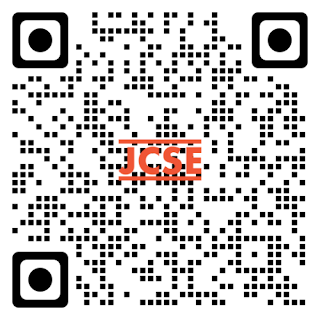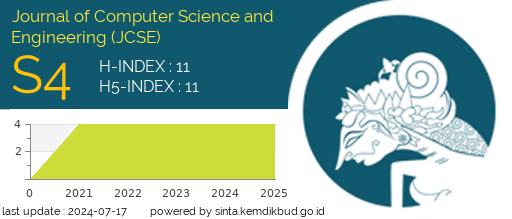Statistical Analysis of Adaptive Thresholding Algorithms for Denoising Signature Images
(1) Assam University, Silchar
(2) Assam University, Silchar, India
Abstract
Keywords
Full Text:
PDFReferences
H. Gupta and K. Chauhan, “Role of biometric security for the enhancement of data security,” Int. J. Comput. Technol., vol. 14, no. 10, pp. 6184–6189, 2015. doi: 10.24297/ijct.v14i10.1832.
E. Maiorana and P. Campisi, “Signature biometrics,” Encycl. Cryptogr. Secur. Priv., pp. 1–5, 2021.
D. Impedovo and G. Pirlo, “Automatic signature verification: The state of the art,” IEEE Trans. Syst. Man Cybern. Part C, vol. 38, no. 5, pp. 609–635, 2008. doi: 10.1109/TSMCC.2008.923866.
U. M. Butt, S. Ahmad, F. Shafait, C. Nansen, A. S. Mian, and M. I. Malik, “Automatic signature segmentation using hyper-spectral imaging,” Int. Conf. Front. Handwrit. Recognit., pp. 19–24, 2016. doi: 10.1109/ICFHR.2016.0017.
R. Mandal, P. P. Roy, U. Pal, and M. Blumenstein, “Signature segmentation and recognition from scanned documents,” Int. Conf. Intell. Syst. Des. Appl., pp. 80–85, 2013. doi: 10.1109/ISDA.2013.6920712.
X. Wang and Y. Su, “Image encryption based on compressed sensing and DNA encoding,” Signal Process. Image Commun., vol. 95, 2021. doi: 10.1016/j.image.2021.116246.
V. Kumar and P. Gupta, “Importance of Statistical Measures in Digital Image Processing,” Int. J. Emerg. Technol. Adv. Eng., vol. 2, no. 8, pp. 56–62, 2012.
J. S. Weszka, R. N. Nagel, and A. Rosenfeld, “A threshold selection technique,” IEEE Trans. Comput., vol. 100, no. 12, pp. 1322–1326, 1974. doi: 10.1109/T-C.1974.223858.
A. Elen and E. Dönmez, “Histogram-based global thresholding method for image binarization,” Optik, vol. 306, p. 171814, Jul. 2024, doi: 10.1016/j.ijleo.2024.171814.
K. K. Brar et al., “Image segmentation review: Theoretical background and recent advances,” Inf. Fusion, vol. 114, p. 102608, Feb. 2025, doi: 10.1016/j.inffus.2024.102608.
N. Otsu, “A Threshold Selection Method from Gray-Level Histograms,” IEEE Trans. Syst. Man Cybern., vol. 9, no. 1, 1979. doi: 10.1109/TSMC.1979.4310076.
C. Saharia, J. Ho, W. Chan, T. Salimans, D. J. Fleet, and M. Norouzi, “Image super-resolution via iterative refinement,” IEEE Trans. Pattern Anal. Mach. Intell., vol. 45, no. 4, pp. 4713–4726, 2022. doi: 10.1109/TPAMI.2022.3204461.
X. Xu, S. Xu, L. Jin, and E. Song, “Characteristic analysis of Otsu threshold and its applications,” Pattern Recognit. Lett., vol. 32, no. 7, pp. 956–961, 2011. doi: 10.1016/j.patrec.2011.01.02. doi: 10.1016/j.patrec.2011.01.02.
V. Saini, M. Khurana, and R. K. Challa, “A Hybrid Model for the Segmentation of Mammogram Images using Otsu Thresholding, Morphology and U-Net,” Biomed. Pharmacol. J., vol. 18, no. 1, 2025.
M. A. Mahjoub, “Image segmentation by adaptive distance based on EM algorithm,” 2012, arXiv preprint: arXiv:1204.1629.
X. Liu, Y. Zhao, S. Wang, and J. Wei, “G-SAM: GMM-based segment anything model for medical image classification and segmentation,” Clust. Comput., vol. 27, no. 10, pp. 14231–14245, 2024. doi: 10.1007/s10586-024-04679-x.
M. Schwab, A. Mayr, and M. Haltmeier, “Deep Gaussian Mixture Model for Unsupervised Image Segmentation,” in Machine Learning, Optimization, and Data Science, vol. 15509, G. Nicosia, V. Ojha, S. Giesselbach, M. P. Pardalos, and R. Umeton, Eds., in Lecture Notes in Computer Science, vol. 15509. , Cham: Springer Nature Switzerland, 2025, pp. 339–352. doi: 10.1007/978-3-031-82484-5_25.
A. Kartakoullis, N. Caporaso, M. B. Whitworth, and I. D. Fisk, “Gaussian mixture model clustering allows accurate semantic image segmentation of wheat kernels from near-infrared hyperspectral images,” Chemom. Intell. Lab. Syst., vol. 259, p. 105341, Apr. 2025, doi: 10.1016/j.chemolab.2025.105341.
H. Peng, C. Luo, L. He, and H. Tang, “Embedded Particle Size Measurement Method of Metal Mineral Polished Section Using Gaussian Mixture Model Based on Expectation Maximization Algorithm,” Minerals, vol. 14, no. 4, p. 358, 2024. doi: 10.3390/min14040358.
A. M. Mogharen, M. Wang, X. Yin, X. Jia, and J. Hu, “U-Net-Based Fingerprint Enhancement for 3D Fingerprint Recognition,” Sensors, vol. 25, no. 5, pp. 13–84, 2025. doi: 10.3390/s25051384.
J. Lee Rodgers and W. A. Nicewander, “Thirteen ways to look at the correlation coefficient,” Am. Stat., vol. 42, no. 1, pp. 59–66, 1988. doi: 10.1080/00031305.1988.10475524.
Z. Wang, A. C. Bovik, H. R. Sheik, and E. P. Simoncelli, “Image quality assessment: from error visibility to structural similarity,” IEEE Trans. Image Process., vol. 13, no. 4, pp. 600–612, 2004. doi: 10.1109/TIP.2003.819861.
Z. Wang, X. Cun, J. Bao, W. Zhou, J. Liu, and H. Li, “Uformer: A general u-shaped transformer for image restoration,” in Proceedings of the IEEE/CVF Conference on Computer Vision and Pattern Recognition, 2022, pp. 17683–17693. doi: 10.48550/arXiv.2106.03106.
P. Roy, S. Dutta, N. Dey, G. Dey, S. Chakraborty, and R. Ray, “Adaptive thresholding: A comparative study,” presented at the International Conference on Control, Instrumentation, Communication and Computational Technologies (ICCICCT), 2014, pp. 1182–1186. doi: 10.1109/ICCICCT.2014.6993140.
Y. Cai et al., “Mask-guided spectral-wise transformer for efficient hyperspectral image reconstruction,” Proc. IEEECVF Conf. Comput. Vis. Pattern Recognit., pp. 17502–17511, 2022. doi: 10.48550/arXiv.2111.07910.
P. D. R. Raju and G. Neelima, “Image segmentation by using histogram thresholding,” Int. J. Comput. Sci. Eng. Technol., vol. 2, no. 1, pp. 776–779, 2012.
J. Yousefi, “Image binarization using otsu thresholding algorithm,” Ont. Can. Univ. Guelph 10, 2011.
M. Haugh, The EM algorithm. Machine Learning for OR & FE, 2015.
S. Karimijafarbigloo, S. Azad, A. Kazerouni, and D. Merhof, “MedScale-Former: Self-guided multiscale transformer for medical image segmentation,” Med. Image Anal., 2025. doi: 10.1016/j.media.2025.103554.
I. Bakurov, M. Buzzelli, R. Schettini, M. Castelli, and L. Vanneschi, “Structural similarity index (SSIM) revisited: A data-driven approach,” Expert Syst. Appl., vol. 189, 2022. doi: 10.1016/j.eswa.2021.116087.
T. Chai and R. R. Draxler, “Root mean square error (RMSE) or mean absolute error (MAE)?– Arguments against avoiding RMSE in the literature,” Geosci. Model Dev., vol. 7, no. 3, pp. 1247–1250, 2014. doi: 10.5194/gmd-7-1247-2014.
Tian, W., Mu, Z., Lu, Y., Cai, S., Xiong, Y., & Huang, Y. (2025). A fast level set segmentation algorithm for sonar images driven by Gaussian Mixture Model probability. Alexandria Engineering Journal, 129, 16-28. doi: 10.1016/j.aej.2025.05.036.
Lv, M., Liu, H., Wang, M., Wang, D., Li, H., Lu, X., ... & Li, Q. (2025). Small Scale Multi-Object Segmentation in Mid-Infrared Image Using the Image Timing Features–Gaussian Mixture Model and Convolutional-UNet. Sensors, 25(11), 3440. doi: 10.3390/s25113440.
Refbacks
- There are currently no refbacks.
 Journal of Computer Science and Engineering (JCSE)
Journal of Computer Science and Engineering (JCSE)Published by : ICSE (Institute of Computer Sciences and Engineering)
Website : http://icsejournal.com/index.php/JCSE/
Email: jcse@icsejournal.com
 is licensed under a Creative Commons Attribution-ShareAlike 4.0 International License.
is licensed under a Creative Commons Attribution-ShareAlike 4.0 International License.







